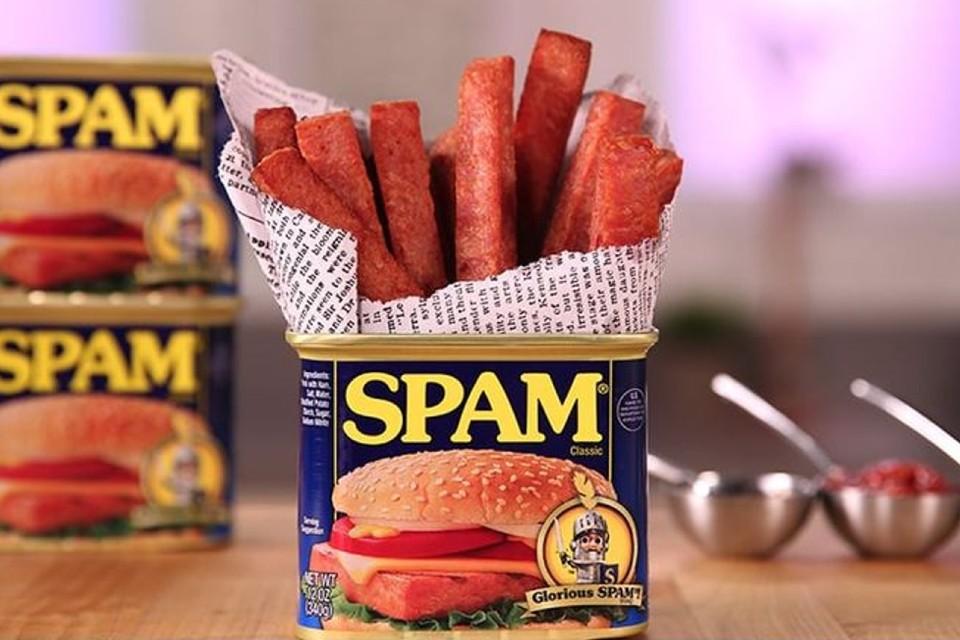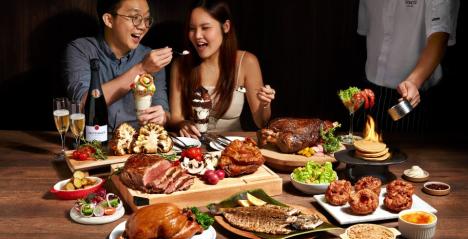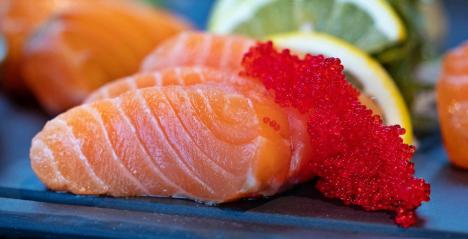Wah, finally got the chance to snack on spam fries yesterday. Totally sinful & unhealthy but yummy plus it brings back childhood memories. This food first came to life in 1937 in the small town of Austin, Minnesota. It was created with the purpose to increase the sale of pork shoulder which was not a very popular cut of meat back then. Image Credit: SideChef
To drum up interest in this newly invented canned meat, its inventor, US company Hormel Foods, launched a contest to name it. Actor Ken Daigneau, who also happen to be the brother of Hormel Foods’ vice-president, won the contest – and US$100 – for coining the name SPAM. Hormel claims that the meaning of the name is known to only a small circle of former Hormel Foods executives but popular beliefs are that the name is an abbreviation of "SPiced hAM”
Hitting shelves across America during the final years of the Great Depression, Spam quickly won over stretched homemakers because it was cheap, did not need to be refrigerated, had a long shelf life and was extremely versatile: it could be fried, baked, boiled or braised.
However, it wasn’t until World War II that sales boomed. The difficulty of delivering fresh meat to the front during World War II saw Spam become an integrated part of the U.S. soldier's diet. In 1941, when America joined WW2, more than 50,000 tons of Spam was shipped abroad to feed allied troops.
Not only was it the staple of soldiers’ diets, they also used the grease from Spam to oil their guns and waterproof their boots. From England to Asia-Pacific, wherever the troops went, so too went Spam, seeping into local cultures all over the world. It became variously referred to as "ham that didn't pass its physical" , "meatloaf without basic training" and "Special Army Meat".
Everywhere the soldiers went, they shared a lot of things including Spam with local populations because in most places they went, the local population were starving eg South Korea, Japan, Philippines, etc. Spam’s versatility allowed people from different countries to adapt it to their own tastes and cooking methods.
Spam contains six main ingredients – pork with ham added, salt, water, potato starch, sugar and sodium nitrate – comes in 15 varieties, though there are many more imitations with one of the most famous one being the Ma Ling luncheon meat from China.
Although many have raised concerns over the nutritional value due to its high content of fat, sodium & preservatives, Spam is currently eaten in 44 countries with 12.8 cans being consumed every second.
USA is the largest consumer of Spam. Although it had developed a stigma for being a poor man’s food, this negative perception never seemed to reach the shores of Hawaii.
Spam is a staple in the island state, where locals eat a staggering seven million cans each year in snacks such as musubi, where a slice of Spam is placed on top of a block of unseasoned rice and wrapped with nori.
It has also earned its a nickname, “hawaiian steak.” It can be bought and eaten at the local Hawaiian McDonald’s or Burger King. And during the last week of April, there’s the annual SPAM Jam festival.
South Korea is the second-largest consumer of Spam. Koreans eat it in their Army stews, fry it in egg batter and it’s a popular holiday gift sold in lavish packages, which make up about 60% of annual sales. In Japan, Spam is used in onigiri (rice balls), and is served alongside eggs.
In the Philippines it was the main source of meat for American soldiers stationed there during World War II. It is believed Spam was introduced to Filipinos as a kind of reward, and once the population had a taste of it, the processed meat disrupted the local food culture.
Generations of Filipinos love eating Spam regularly, typically sliced or diced then stir-fried and served on a bed of steamed rice, sometimes with a fried egg.
In Malaysia & Singapore, the more common term for it is luncheon meat. This is because when SPAM was first introduced to the Chinese market, it was marketed as luncheon meat in mandarin.
In Hong Kong, the post-WW2 manufacturing boom saw a rise in factory workers wanting cheap and easy meals. In the 1950s, cha chaan tengs in Hong Kong tapped into this demand by combining Chinese ingredients with Western food (butter, cheese, luncheon meat) and selling dishes at affordable prices.
This resulted in creations like Coca-Cola chicken wings, egg waffles & instant noodles with Spam. In fact a typical Hong Kong breakfast can be a bowl of soup served with macaroni noodles, fried luncheon meat and an egg on top.
The luncheon meat is also often the centrepiece in egg and ham sandwiches, sold at takeaway or fast food outlets throughout Hong Kong.
Word of the luncheon meat soon spread beyond Hong Kong and China, to the whole of Asia including Singapore & Malaysia. However the king of luncheon meat in these countries is Ma Ling luncheon meat from Shanghai, China.
For many Singaporeans & Malaysians, luncheon meat fills up a large part of their childhood memories especially among the Chinese. Not only does it go splendidly with bread, it is also a ‘must-have’ add-on dish for instant noodles & a perfect substitute for main dish when our mums happen to be at her wit’s end on selecting dishes to prepare for dinner !!!
On a final note, the famous UK comedy show Monty Python sketch about Spam was such a hit, mentioning the word Spam more than 130 times, that it inspired the name of unsolicited emails – “spam mail”. ✉️











